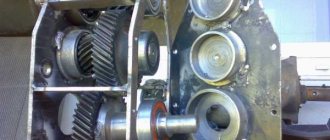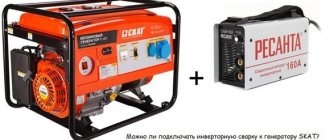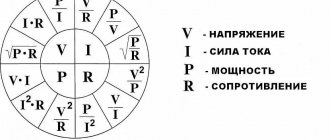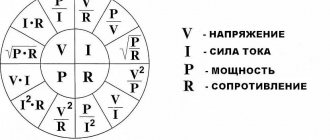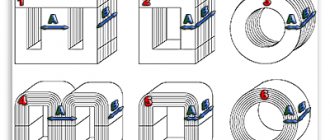How often to start the generator when idle?
Elektron72
I am engaged in the installation and maintenance of power plants. Regarding downtime, I recommend that you start the generator: in winter, once a week, and in summer, once a month, and, at the same time, give it a good load! If the generator is difficult to start, replace the gasoline with fresh one, pour the old fuel into the car and drive.
Traks
I conduct test runs of the power plant spontaneously. After the generator has been grinding for 2-3 minutes, I give it a load - I connect a construction hair dryer with a power of 1.5 kW. I turn off the device after five minutes, as soon as the engine crankcase becomes warm. I change the oil in spring and autumn.
Lekcei4
I put my generator in the garage extension. There is an electric start. The body is insulated. Once a month I turn on the power plant. I let it run for a bit and turn it off. Important point! I turn off the generator by turning off the fuel supply valve until the gasoline is completely exhausted. This will prevent the carburetor from coking.
What kind of gasoline to pour into a gas generator
In most cases, A92 fuel is best suited for gasoline generators. In practice, gasoline with a higher octane number does not provide any great benefits, and its cost is significantly higher. When using a four-stroke gas generator, fuel must be poured into the tank in its pure form, while to refuel a station with a two-stroke engine you will need to mix gasoline and engine oil. This procedure is performed to ensure reliable and stable operation of the engine, extending the operating period and reducing fuel consumption. It should be noted that gasoline generators with two-stroke engines have much more toxic emissions than four-stroke engines. When choosing oil for a generator, it is necessary to take into account that they can be summer and winter, as well as mineral or synthetic, which affects their viscosity and fluidity under different conditions. Before purchasing and using oil, be sure to read the recommendations and advice of your power plant manufacturer.
In most cases, gasoline and oil for refueling two-stroke engines are pre-mixed, outside the equipment, but some models of gasoline generators are equipped with an automatic mixing system.
- Model:
EP 25000 TE in container with AVR - Power:
16 kW - RUB 1,079,740
- Model:
AB10-T400-VM111E in container - Power:
10 kW - RUB 291,690
- Model:
LT 3500 CL - Power:
2.5 kW - 19,600 rub.
We increase power with our own hands
The voltage regulator should not allow values to drop below 13.8 Volts. Such indicators can be achieved using an additional diode, which is included in the electrical circuit. This element is not used in the on-board network at normal values.
If there is not enough electricity, then to activate the diode it is enough to turn on the toggle switch. With the help of such manipulation, the voltage regulator is deceived.
When choosing and installing a diode, you need to consider the following important points:
- the device must produce at least 5 Amperes;
- strictly observe polarity when connecting;
- this element must be placed outside the generator to prevent it from overheating;
- It is better to choose the silicon version of the diode.
To complete the work you will need:
- terminals with male-female wires;
- heat shrink insulation;
- diode.
First, connect the terminals to the diode ends. Solder the “mother” terminal to the negative terminal (cathode) with a strip on the body, and solder the “male” terminal to the positive (anode) terminal.
Having completed the above steps, you need to assemble the circuit to the end and check the electrical parameters when the generator is running. As practice shows, this method, despite its simplicity, is distinguished by its reliability and reliability.
What are they good for?
Gasoline generators are used during emergency shutdowns as a replacement for the current source.
They help out owners of dachas and construction sites where power has not yet been supplied, and provide a decent living for geologists, rangers, reindeer herders, drillers - everyone who is forced to work in hard-to-reach areas. A good assistant for home craftsmen in the country or in the garage. They make it possible to replace manual labor with mechanized labor even where the use of electricity is not available. Lighting, electrical appliances and tools, and household appliances are connected through the generator. When connecting devices, pay attention to the permissible voltage - if the generator is designed for 127 Volts, then devices manufactured for 220 Volts will not be able to operate with the declared power. The uninterrupted operation time of a gas generator depends on the power of the device, the volume of the fuel tank, and the load size
There are models capable of operating under load for up to one and a half thousand hours.
The uninterrupted operation time of a gas generator depends on the power of the device, the volume of the fuel tank, and the load size. There are models that can provide operation under load for up to one and a half thousand hours.
Device and design
In private country houses, on summer cottages in villages, you can very often observe a loss of electricity for several hours or even days in the winter season. An energy generator is an ideal option for maintaining the functionality of household appliances in the house, but sometimes in the harsh winter an emergency may occur and your generator will stop working.
This extremely unpleasant situation requires quick repair, but we have a separate article for it. Now we will analyze the design of the gas generator and its components.
Which battery should I put on the generator so that the station starts up without problems in the cold?
Elektron72
If the generator is standing outside in the cold, then I recommend replacing the standard gel battery with a regular car acid battery of higher capacity. To charge the battery, if the ATS (automatic transfer switch) does not have its own charger, connect an ordinary 2-3 A switching power supply and set it to 13.7 V.
At temperatures of -30 degrees Celsius and below, almost all gasoline generators do not start or start with difficulty.
If you want a guaranteed start of the station in severe frosts, take a car battery with a capacity of 55-65 Ah. Or place the generator in an insulated and heated place.
Gen_Master
For a gasoline engine, for a confident start in the cold, it is important that the air filter is clean, the fuel is fresh, the battery is charged, the spark plugs are not flooded, and the oil is selected according to the season
Basic installation recommendations.
Gas generators are installed both indoors and outdoors. If the unit is installed outdoors, it is necessary to protect it from aggressive factors such as precipitation or dirt. The electric unit can be placed in a barn or other outbuilding. Such placement is also optimal due to such properties of the electric generator as fire hazard, noise and the presence of harmful exhausts.
When placing the gas generator inside a residential building, it can be installed in a ventilated basement or garage.
To eliminate vibrations, the generator must be installed on a perfectly flat surface. There are certain requirements for the premises. So, there should not be high humidity here. Otherwise, a short circuit may occur. The generator is installed in a dry place where the sun's rays do not reach. It is necessary to organize high-quality ventilation and air conditioning in the room; this is required for cooling gasoline generators with air ventilation.
It is necessary to exclude the appearance of open flame sources near gas generators. This is necessary in order to minimize the risk of fire, because the generator uses highly flammable fuel. Smoking and working with open flames should not be allowed near gasoline-powered electrical units.
Generator selection
When choosing a generator, you need to start by determining the required power. This question is not as simple as it seems, since consumers in alternating current circuits have both active (ohmic) resistance and reactive (capacitive and inductive), and often before reaching the operating mode they have energy consumption significantly higher than the nominal one.
The simplest example: we need a portable generator from which we will power an 800 W rotary hammer. Its electric motor has a significant inductive component of resistance, which, when calculating energy consumption, is described by the so-called power factor, denoted as cosφ. If for a load that does not have reactance it is equal to unity, then it increases with increasing capacitance or inductance of the load. In addition, we must not forget that the generator itself has significant inductance.
It is precisely because of the inductive resistance of the generator windings that its power is indicated not in watts, but in volt-amperes at a given power factor: for example, a 5 kVA gas generator with its own cosφ = 0.8 actually has a maximum power of 4 kW.
Thus, if it is necessary to power an 800-watt electric motor with its own cosφ = 0.5, we will need a generator capable of delivering a power of 1600 W for a long time, that is, its peak power, indicated in the characteristics, should be one and a half to two times greater. Taking into account the losses in the generator itself, for our hammer drill we will have to purchase a 4 kVA gas generator.
At the same time, if we need to power lighting and an electric heater (consumers that have no reactance) from the same generator, their total power can be twice as large with the same load on the generator itself.
Next, we will determine the operating time of the generator. As already mentioned, for long-term operation, a diesel power unit is preferable - therefore, when considering a unit for constantly supplying energy to a building (private house or small workshop), it is worth considering this option, especially taking into account the above-described calculation of the required generator power - a gasoline unit will be too voracious. Since it will be impossible to constantly monitor a long-running generator, it must be equipped with a protective device that shuts down the engine when the engine oil level or pressure drops.
In some cases (the need for frequent transportation, especially manual transportation), the lighter weight of a gasoline generator may be a more important factor than the efficiency of a diesel one. Also, a gasoline unit is a more preferable option for short-term use - in this case, efficiency and resource play a much smaller role than the price of the unit itself.
To provide emergency power to your home, it is worth considering the option of connecting a generator designed to use natural gas to the gas network.
Features of a car generator
After turning the ignition key, current flows into the field winding. Here it is controlled by a voltage stabilizer, which is powered by the rectifier section.
Today they are connected according to two main schemes. The older version is reliable, works stably, maintaining voltage at approximately a constant level. The updated scheme has many disadvantages.
The uniqueness of the automobile unit is that it generates electricity by converting the mechanical energy of the rotating engine crankshaft, which is connected to the generator pulley by a belt. At the same time, the engine speed is not a constant value.
In this case, regardless of engine speed, the voltage should always remain within approximately 14 Volts. Otherwise, it will negatively affect both the battery and the electrical circuit. Overcharging and undercharging will have a detrimental effect on the battery.
The operating principle of electronic speed stabilization is based on the dependence of the capacitor resistance on the current frequency. The diagram shows a stabilizing winding (L3) loaded onto a capacitor (C1). When operating at rated load, the output voltage is 220 V with a frequency of 50 Hz. Since the frequency of the output voltage directly depends on the number of revolutions per second, a change in the rotation speed of the generator rotor causes an unambiguous change in the voltage frequency on all windings of the generator.
The resistance of a capacitor depends on the frequency of the applied voltage. The higher the frequency, the lower the resistance. As a result, the current through the stabilizing winding varies depending on the load on the generator. As the load decreases, the number of revolutions increases, respectively, the frequency increases and the resistance of the capacitor decreases.
Electrical stabilization operates over a small range of changes, so the main adjustment function is assigned to the mechanical regulator. Here the range of adjustments is much wider, but at the expense of reaction speed. The internal combustion engine has inertia, and the change in its speed is slightly delayed when adjusting the throttle valve (this characteristic of the engine is called throttle response). Sudden load surges can cause the control system to oscillate.
Such a regulation system is difficult to make on your own, and an electronic one requires modification of the generator. The advantage of such a control circuit is the production of sinusoidal voltage with minimal distortion of the signal shape.
Inverter Gasoline Generator
The alternating voltage of the generator is supplied to the rectifier, and then to the transistor converter, the output of which is a stabilized voltage of the required value. The presence of a rectifier removes restrictions on the stability of the generator frequency, and the transistor converter generates voltages regardless of the load size. The disadvantage of inverter generators is their high cost and distortion of the output voltage waveform.
Interfacing the engine and generator
Rotation from the engine to the generator is transmitted by a belt drive or gearbox. But the gearbox has a large mass and high noise, so it is better to use a belt drive.
Engines and generators have different nominal speeds, so the pulleys on the shafts of these devices must provide a certain gear ratio. It is calculated simply: how many times the generator speed should be less than the engine speed, the same number of times the diameter of the generator pulley should exceed the diameter of the engine pulley.
Note! You should not take the pulley diameter too small, since strong bending of the drive belt will shorten its service life, and the efficiency will decrease, since part of the engine power will be lost due to bending of the belt. In practice, pulleys with a minimum diameter of at least 100 mm can be used.
It is tempting to use generators with original pulleys. But, if a flat belt is used, then it is quite difficult to find one of the required length, therefore, in order to facilitate the search for the right belt, the pulleys need to be made for a V-belt. There are many such belts of all possible lengths in any auto shop or car market, and their cost is low.
Pulleys are made of duralumin or textolite. Any turner can do this for a nominal fee. The main thing is to ensure a tight fit on the generator and engine shaft.
Principle of operation
In inexpensive industrial gas generators, frequency and voltage adjustment is performed in two stages. The first stage is mechanical. The principle of its operation is based on the fact that as the electrical load increases, the engine speed drops. The engine speed sensor is mechanically connected to the carburetor throttle valve, so any change in speed is compensated by adjusting the throttle position automatically. The second stage of adjustment is carried out electronically. The figure above shows the circuit diagram of a typical inexpensive gas generator.
The operating principle of electronic speed stabilization is based on the dependence of the capacitor resistance on the current frequency. The diagram shows a stabilizing winding (L3) loaded onto a capacitor (C1). When operating at rated load, the output voltage is 220 V with a frequency of 50 Hz. Since the frequency of the output voltage directly depends on the number of revolutions per second, a change in the rotation speed of the generator rotor causes an unambiguous change in the voltage frequency on all windings of the generator.
The resistance of a capacitor depends on the frequency of the applied voltage. The higher the frequency, the lower the resistance. As a result, the current through the stabilizing winding varies depending on the load on the generator. As the load decreases, the number of revolutions increases, respectively, the frequency increases and the resistance of the capacitor decreases. The current through the winding (L3) increases and its braking value on the generator rotor increases. Thus, the rotation speed is adjusted continuously and instantly while the generator is running.
Electrical stabilization operates over a small range of changes, so the main adjustment function is assigned to the mechanical regulator. Here the range of adjustments is much wider, but at the expense of reaction speed. The internal combustion engine has inertia, and the change in its speed is slightly delayed when adjusting the throttle valve (this characteristic of the engine is called throttle response). Sudden load surges can cause the control system to oscillate.
Such a regulation system is difficult to make on your own, and an electronic one requires modification of the generator. The advantage of such a control circuit is the production of sinusoidal voltage with minimal distortion of the signal shape.
More complex generators are made using a double conversion inverter circuit (Fig. below).
Inverter Gasoline Generator
The alternating voltage of the generator is supplied to the rectifier, and then to the transistor converter, the output of which is a stabilized voltage of the required value. The presence of a rectifier removes restrictions on the stability of the generator frequency, and the transistor converter generates voltages regardless of the load size. The disadvantage of inverter generators is their high cost and distortion of the output voltage waveform.
How to increase the power of a gas generator with your own hands? — Handyman's Handbook
> Generators > How to make a gas generator with your own hands
If we look at the structure of a gas generator, we can see that it consists of only two main elements: the engine and the generator.
The whole difficulty of manufacturing a device lies in adjusting the characteristics of the interaction of the components. The quality of the supplied electricity is determined by two quantities - frequency and voltage.
And while stabilizing the voltage value is quite simple, adjusting the frequency is fraught with significant difficulties.
Circuit diagram of an inexpensive gas generator
Asynchronous electric motor as a generator
The article describes how to build a three-phase (single-phase) 220/380 V generator based on an AC asynchronous electric motor. A three-phase asynchronous electric motor, invented at the end of the 19th century by the Russian electrical engineer M.O. Dolivo-Dobrovolsky, has now become predominantly widespread in industry, agriculture, and also in everyday life.
Asynchronous electric motors are the simplest and most reliable to operate. Therefore, in all cases where this is permissible under the conditions of the electric drive and there is no need for reactive power compensation, asynchronous AC motors should be used.
There are two main types of asynchronous motors: with a squirrel cage rotor and with a wound rotor. An asynchronous squirrel-cage electric motor consists of a stationary part - the stator and a moving part - the rotor, rotating in bearings mounted in two motor shields.
The stator and rotor cores are made of separate electrical steel sheets insulated from one another. A winding made of insulated wire is placed in the grooves of the stator core. A rod winding is placed into the grooves of the rotor core or molten aluminum is poured.
Jumper rings short-circuit the rotor winding at the ends (hence the name short-circuited). Unlike a squirrel-cage rotor, a winding made like a stator winding is placed in the slots of a phase-wound rotor. The ends of the winding are brought to slip rings mounted on the shaft.
Brushes slide along the rings, connecting the winding to a starting or control rheostat.
Asynchronous electric motors with a wound rotor are more expensive devices, require qualified maintenance, are less reliable, and therefore are used only in those industries where they cannot be done without them. For this reason, they are not very common, and we will not consider them further.
Under the influence of this EMF, current flows in the short-circuited rotor rods.
Magnetic fluxes arise around the rods, creating a general magnetic field of the rotor, which, interacting with the rotating magnetic field of the stator, creates a force that forces the rotor to rotate in the direction of rotation of the stator magnetic field.
The rotor rotation frequency is slightly less than the rotation frequency of the magnetic field created by the stator winding. This indicator is characterized by slip S and is for most engines in the range from 2 to 10%.
In industrial installations, three-phase asynchronous electric motors are most often used, which are produced in the form of unified series. These include the single 4A series with a rated power range from 0.06 to 400 kW, the machines of which are highly reliable, have good performance and meet world standards.
Autonomous asynchronous generators are three-phase machines that convert the mechanical energy of the prime mover into alternating current electrical energy. Their undoubted advantage over other types of generators is the absence of a commutator-brush mechanism and, as a consequence, greater durability and reliability.
Generator circuit
Portable generator, device and principle of operation.
A portable electric generator has an internal combustion engine, a generator and auxiliary devices. The engine can be gasoline or diesel, depending on the model of the device. In the case of a gasoline generator, gasoline is used as fuel. Getting from the gas tank into the metering device and mixing with air, a flammable mixture is formed. It is supplied to the working cylinder through a valve. It contains the piston, spark plug, intake and exhaust valves. When the piston is at the top point, the spark plug ignites the combustible mixture, it pushes the piston down. The piston is connected to the crankshaft using a connecting rod and as it moves, the piston turns the crankshaft. The engine crankshaft is connected to the generator shaft.
| allgenerator.ru | RUB 10,420 | |
| ups-shop.ru | RUR 25,120 | |
| allgenerator.ru | RUB 18,700 | |
| electro-shop.ru | RUB 9,900 | |
| ups-shop.ru | RUR 43,441.80 | |
| allgenerator.ru | RUB 67,500 | |
| More offers |
An alternator consists of a rotor and a stator. The stator is located in the housing. Inside the housing, there are magnetic cores in a circle on which the excitation winding is wound. The rotor is located on the motor shaft. It consists of a metal base and windings, the ends of which are connected to slip rings. When the shaft rotates, a magnetic field is created in the stator windings, which acts on the rotor windings and creates an electrical impulse in them. It is transmitted through a brush assembly with slip rings to the output of the generator. At high rotation speeds, these pulses form an alternating current.
The energy generated by the generator has a jumping voltage and frequency. In order for the device to generate the required voltage, stabilization devices are used. They receive the voltage generated by the generator and bring its parameters to the required ones. The stabilizer stabilizes the voltage value within the nominal voltage and supplies it to power devices. It is this detail that affects the characteristics of the device.
How to increase the power of a gas generator with your own hands? – Handyman's Handbook
> Generators > How to make a gas generator with your own hands
If we look at the structure of a gas generator, we can see that it consists of only two main elements: the engine and the generator.
The whole difficulty of manufacturing a device lies in adjusting the characteristics of the interaction of the components. The quality of the supplied electricity is determined by two quantities - frequency and voltage.
And while stabilizing the voltage value is quite simple, adjusting the frequency is fraught with significant difficulties.
Circuit diagram of an inexpensive gas generator
Asynchronous electric motor as a generator
The article describes how to build a three-phase (single-phase) 220/380 V generator based on an AC asynchronous electric motor.
A three-phase asynchronous electric motor, invented at the end of the 19th century by the Russian electrical engineer M.O.
Dolivo-Dobrovolsky, has now become predominantly widespread in industry, agriculture, and also in everyday life.
Asynchronous electric motors are the simplest and most reliable to operate. Therefore, in all cases where this is permissible under the conditions of the electric drive and there is no need for reactive power compensation, asynchronous AC motors should be used.
There are two main types of asynchronous motors: with a squirrel cage rotor and with a wound rotor. An asynchronous squirrel-cage electric motor consists of a stationary part - the stator and a moving part - the rotor, rotating in bearings mounted in two motor shields.
The stator and rotor cores are made of separate electrical steel sheets insulated from one another. A winding made of insulated wire is placed in the grooves of the stator core. A rod winding is placed into the grooves of the rotor core or molten aluminum is poured.
Jumper rings short-circuit the rotor winding at the ends (hence the name short-circuited). Unlike a squirrel-cage rotor, a winding made like a stator winding is placed in the slots of a phase-wound rotor. The ends of the winding are brought to slip rings mounted on the shaft.
Brushes slide along the rings, connecting the winding to a starting or control rheostat.
Asynchronous electric motors with a wound rotor are more expensive devices, require qualified maintenance, are less reliable, and therefore are used only in those industries where they cannot be done without them. For this reason, they are not very common, and we will not consider them further.
A current flows through the stator winding connected to a three-phase circuit, creating a rotating magnetic field. The magnetic field lines of the rotating stator field cross the rotor winding bars and induce an electromotive force (EMF) in them.
Under the influence of this EMF, current flows in the short-circuited rotor rods.
The rotor rotation frequency is slightly less than the rotation frequency of the magnetic field created by the stator winding. This indicator is characterized by slip S and is for most engines in the range from 2 to 10%.
In industrial installations, three-phase asynchronous electric motors are most often used, which are produced in the form of unified series. These include the single 4A series with a rated power range from 0.06 to 400 kW, the machines of which are highly reliable, have good performance and meet world standards.
Autonomous asynchronous generators are three-phase machines that convert the mechanical energy of the prime mover into alternating current electrical energy. Their undoubted advantage over other types of generators is the absence of a commutator-brush mechanism and, as a consequence, greater durability and reliability.
Why do you need to turn off the generator engine by closing the fuel supply valve?
Listen to the advice of a portal user who professionally maintains power plants.
Genmos
Most often, the generator does not start due to a malfunction of the fuel system. Therefore I recommend:
- Keep the carburetor dry.
- Turn off the generator by turning off the fuel valve until all the fuel is used up.
This way, there will be no gasoline left in the carburetor, and the electrical part of the station will cool down more evenly. This is especially useful for three-phase generators. How many times has it already happened? The client bought the station about 5 years ago. I filled the tank with gasoline. Never started the generator or changed the fuel. The lights were turned off, but the generator would not start. A man calls me and asks what should he do? And every time, the reason is in the carburetor and in the fuel system. To maintain the generator’s combat condition, I advise:
- Start it once a month and run it under load for 30 minutes.
- Turn off by turning off the fuel valve.
- Change the oil according to operating hours or once a year.
- When purchasing a new generator, run it at 50% power.
An important nuance: in winter, it is not recommended to keep the generator tank half empty or leave fuel at the bottom. Fill your tank full. Why? At subzero temperatures and sudden thaws, the metal from the inside, if the tank is half empty, fogs up. Then this frost melts and water gets into the gasoline.
Gas tank
As a gas tank, you can use a metal sealed container with a filler neck with a lid and a fitting for supplying fuel to the carburetor. It is best to use the fuel tank from any vehicle. The main thing is its good condition and suitable dimensions.
Plastic containers must not be used:
- Plastic becomes brittle in the cold;
- Some types of plastic are gradually broken down by gasoline;
- Plastics tend to become electrified and accumulate static electricity, which can cause the fuel to ignite.
Features of a car generator
After turning the ignition key, current flows into the field winding. Here it is controlled by a voltage stabilizer, which is powered by the rectifier section.
Today they are connected according to two main schemes. The older version is reliable, works stably, maintaining voltage at approximately a constant level. The updated scheme has many disadvantages.
In this case, regardless of engine speed, the voltage should always remain within approximately 14 Volts. Otherwise, it will negatively affect both the battery and the electrical circuit. Overcharging and undercharging will have a detrimental effect on the battery.
What UPS are used to ensure uninterruptible power supply?
UPS can be divided into three categories: Off-line (inverters), Line-Interactive and On-line. Let's look at how they differ in the context of providing uninterruptible power supply paired with or without a generator.
Off-line
when the main power is turned off, they turn on within 10–20 ms. This is enough to notice the light blinking, but in many types of equipment this does not lead to a temporary stop. This type of low-power power supply is suitable for non-critical loads: monitors, office laptops, printers, and other office equipment. Powerful Off-line UPSs (aka inverters) automatically provide power from batteries, and when the main power is restored, they switch to battery charging mode and simultaneously power the load.
Line-Interactive
is an improved Off-line version, complemented by a voltage stabilizer and an interference filter. The operating principle and scope of application are similar.
On-line
provides the load with the highest quality power due to the double conversion system. First, the UPS converts alternating current into direct current, and the inverter converts direct current into alternating current. But most importantly, there is zero time required to switch to batteries in the event of a main power failure. The equipment will not be able to identify the switching moment and will continue to operate normally. Accordingly, On-line UPSs are suitable for those enterprises where stopping equipment even for a split second can be critical. For example, the use of On-line systems is a fundamental condition for powering gas heating boilers without an automatic start function.
Choosing a gasoline generator
A gasoline generator is a long-term device, which means you need to choose it carefully, considering all the necessary characteristics.
To select the right generator, it is important to understand that the design of the generator consists of two parts:
- Engine;
- Generator.
Both the engine and the generator have their own parameters that are fundamentally important for the correct choice of device.
So the following fundamentally important parameters are important for the generator:
- Purpose;
- Type;
- Power;
- Voltage;
- Availability of protection.
Important for the engine:
- Engine's type;
- Fuel tank volume;
- Engine start type;
- Gasoline consumption.
For the entire design of a gasoline generator, the following are important:
- Noise level;
- Weight and dimensions.
Let's look at each of the listed parameters in more detail.
Recommendations for use
If you follow simple rules for operating the equipment, it will function stably and for a long time:
- Before turning on, you should make sure that the equipment is in good working order and tight;
- all components must be securely fastened, otherwise the installation will quickly fail due to vibration;
- it is necessary to monitor the oil level and the quality of gasoline;
- Regular cleaning of the air filter is necessary;
- Correct load adjustment is required.



